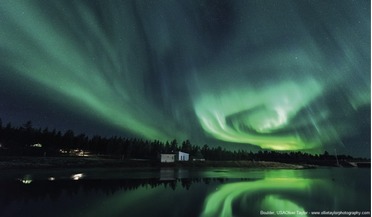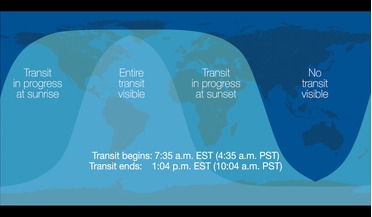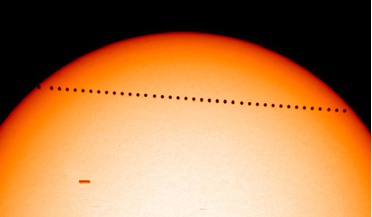 January 2022
Revealing the magnetic universe
January 2022
Revealing the magnetic universe
...at about 120 Astronomical Units (120 times the Earth-Sun distance), is counterbalanced by the unexpectedly high interstellar magnetic...Today we can only predict what might happen as the Sun enters this new environment by continuing to monitor the ...
 June 2022
Sunshades in space could help alleviate Earth’s climate crisis
June 2022
Sunshades in space could help alleviate Earth’s climate crisis
...particular for space sunshades that would intercept some of the Sun’s energy before it reaches Earth. In 1976, physicist ...of thin film structures that sit between the Earth and the Sun to reduce incoming solar energy by approximately one percent. The ...
 June 2017
Bepi-Colombo will unveil Mercury’s secrets
June 2017
Bepi-Colombo will unveil Mercury’s secrets
... receive a significant amount of dangerous radiation from the Sun thus making conditions difficult for biological life to develop ...will receive significant amounts of heat flux from either the Sun of Mercury. It was therefore necessary to devise an ...
 May 2021
Forecasting space-weather effects on Earth
May 2021
Forecasting space-weather effects on Earth
...features/sun_darkness.html). Long filaments erupt from the Sun at frequent intervals sending electromagnetic particles towards Earth.... 1 percent of the distance from the Earth to the Sun known as the L1 Lagrangian point. Empirical models were proposed...
 11 November 2019
Rare transit of Mercury happening soon!
11 November 2019
Rare transit of Mercury happening soon!
...of Mercury, are on the same level and side of the Sun as they cross our host star. As such, Mercury transits ... telescope to see the transit take place. Skywatchers must use special sun-viewing lenses to safely observe Mercury's transit, or if you want...
 May 2016
Rare Mercury transit complete
May 2016
Rare Mercury transit complete
...tiny black dot, inch its way over the surface of the Sun. According to the Royal Astronomical Society (RAS) in the ...that is accessible to everyone." Due to its close proximity to the Sun, Mercury is literally a planet of two halves - during the day,...